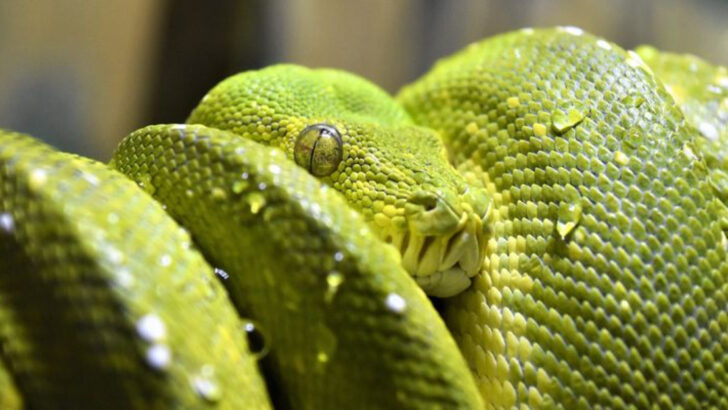Some snakes can outlive your dog, your cat—maybe even your car.
These slithering survivors don’t just creep through grass and deserts—they clock decades in the wild, and even longer in captivity. From garden-friendly garter snakes to giant anacondas lurking in swampy shadows, snake lifespans are anything but predictable.
One might live five years. Another? Forty.
It all depends on the species, the predators, and the kind of life they lead. Some are feast-or-famine hunters. Others lie in wait for days, cold-blooded and patient. Either way, every snake on this list has a story—measured not just in scales and strikes, but in years.
Get ready to meet 15 serpents that don’t just live—they linger.
Ball Python
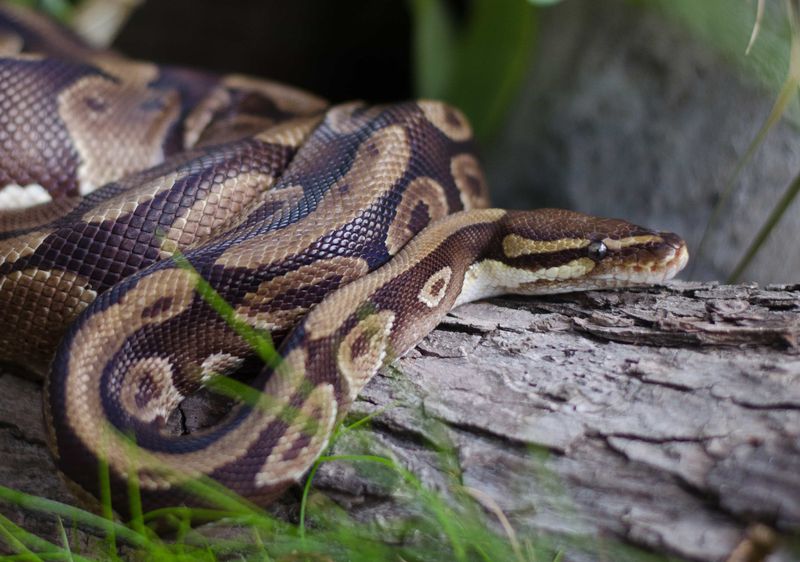
The Ball Python is renowned for its docile temperament, making it a favorite among reptile enthusiasts. These snakes can live up to 30 years in captivity, thanks to their hardy nature and adaptability to various environments.
In the wild, their lifespan is slightly shorter due to predation and environmental challenges. Native to West Africa, Ball Pythons thrive in warm, humid climates. Their ability to curl into a tight ball when threatened gives them their name.
These snakes are not only captivating but also surprisingly easy to care for, adding to their appeal as pets.
Boa Constrictor
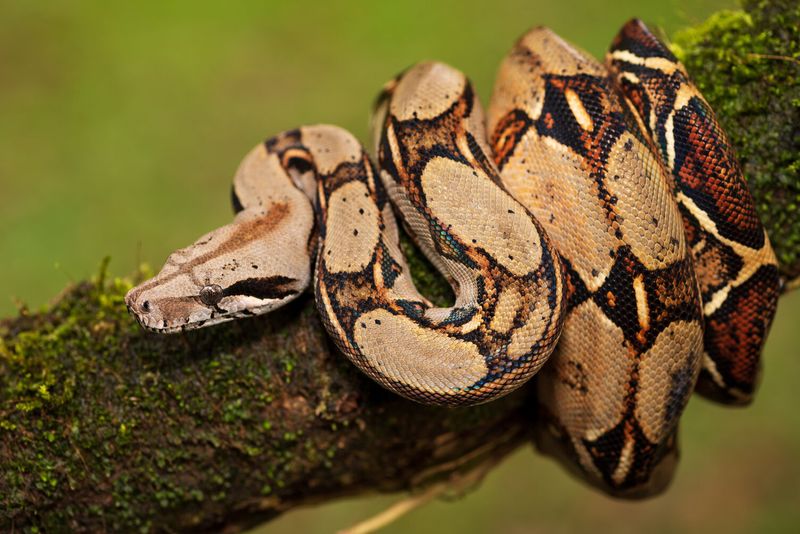
Famous for their size and strength, Boa Constrictors are impressive snakes that can live up to 25-30 years. Their robust lifespan is supported by their adaptability to various habitats, from tropical rainforests to semi-deserts.
These snakes are known for their method of subduing prey by constriction, a technique that showcases their strength and precision. Native to Central and South America, they exhibit beautiful patterns that help them blend into their environment.
Boa Constrictors are a testament to the power and grace that snakes can embody, captivating the interest of many herpetologists.
Corn Snake

Corn Snakes, with their striking colors and calm demeanor, are popular pets among snake enthusiasts. Typically, these snakes can live for 15-20 years in captivity, provided they receive proper care.
Their lifespan in the wild is often shorter, as they face threats from predators and habitat loss. Originating from North America, the Corn Snake’s pattern resembles maize, hence its name.
Known for their gentle nature and manageable size, Corn Snakes make excellent companions for both novice and experienced snake keepers, offering a glimpse into the beauty of the reptile world.
King Cobra

The King Cobra, the world’s longest venomous snake, can reach lengths of up to 18 feet and live for about 20 years. Its longevity is supported by its apex predator status in Asian forests, where it reigns supreme.
These snakes are known for their intelligence and ability to stand their ground, making them formidable in the wild. Despite their fearsome reputation, King Cobras play a critical role in controlling rodent populations.
Their majestic presence and unique behaviors continue to fascinate and inspire awe among biologists and snake enthusiasts alike.
Garter Snake
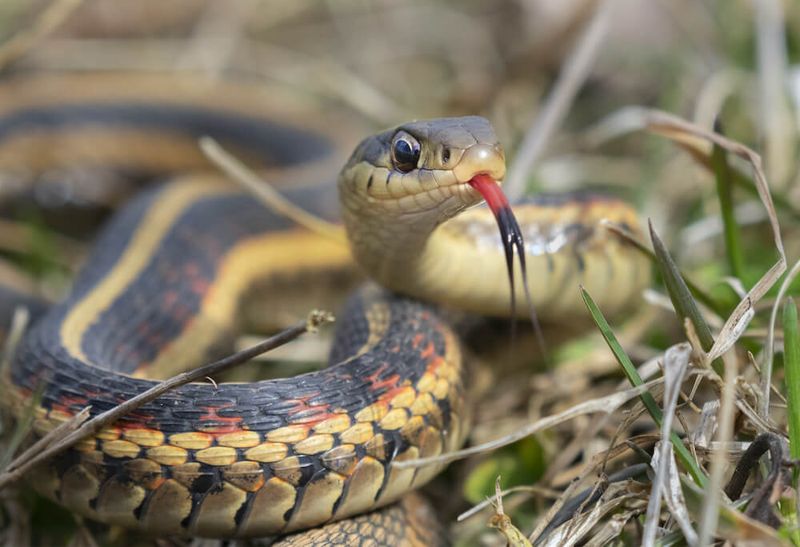
Garter Snakes are among the most widespread snakes in North America, often found in backyards and gardens. These adaptable snakes typically live for 10 years in the wild, but can sometimes reach 15 years in captivity.
Their diet consists of small amphibians and insects, and their resilience allows them to thrive in diverse environments. Known for their striking stripes, Garter Snakes are harmless and beneficial for controlling pest populations.
Their presence in everyday settings makes them a familiar and welcome sight for many nature lovers, symbolizing the subtle beauty of local wildlife.
Anaconda

Anacondas, particularly the Green Anaconda, are among the largest and most formidable snakes in the world. They can live up to 10 years in the wild, with some individuals reaching 20 years in captivity.
These aquatic giants are found in the swamps and rivers of South America, where they silently hunt for prey. Known for their immense strength, Anacondas can subdue large animals, underscoring their position as apex predators.
Their mysterious and awe-inspiring nature continues to capture the imagination of people worldwide, representing the untamed power of the Amazon.
Reticulated Python
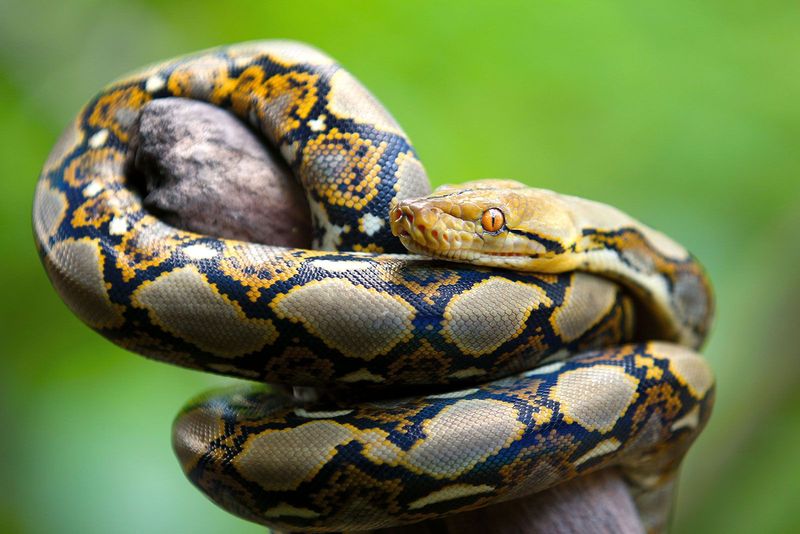
Famed for their length, Reticulated Pythons are the world’s longest snakes, with some individuals exceeding 20 feet. In captivity, they can live up to 25-30 years, provided they have proper care and habitat conditions.
These snakes are native to Southeast Asia and are known for their stunning geometric patterns that offer excellent camouflage. Despite their size, they have a surprisingly gentle disposition, earning them a spot in many zoos and private collections.
The Reticulated Python’s blend of beauty and power continues to intrigue snake enthusiasts and researchers alike.
Black Mamba
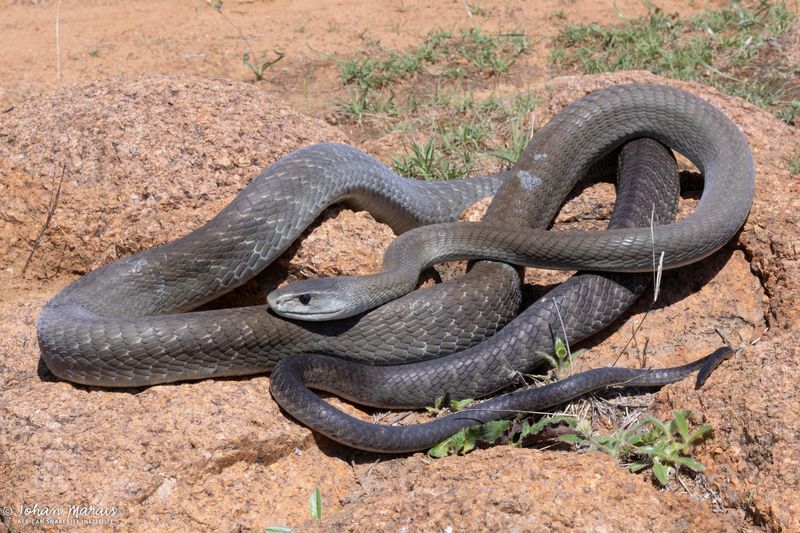
Black Mambas are among the most feared snakes in Africa, known for their speed and potent venom. They can live up to 11 years in the wild and up to 20 years in captivity.
Their long, slender bodies allow them to move swiftly, making them effective hunters. Despite their fearsome reputation, Black Mambas are shy and prefer to avoid confrontation.
Their name comes from the dark interior of their mouths, which they display when threatened. The Black Mamba’s combination of speed, agility, and mystery makes it a captivating subject for both study and folklore.
Eastern Diamondback Rattlesnake
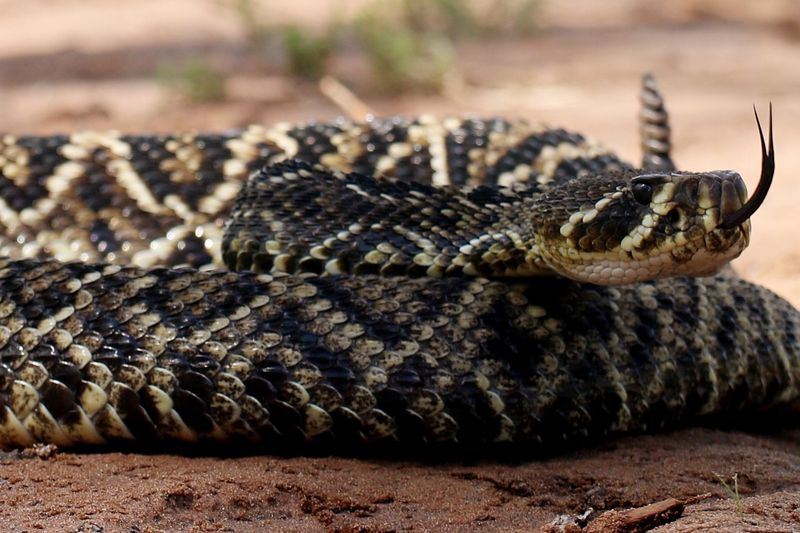
The Eastern Diamondback Rattlesnake is the largest rattlesnake species and can live up to 20 years in the wild. Found in the southeastern United States, these snakes inhabit pine forests and coastal plains.
Their distinctive diamond pattern and warning rattle make them both iconic and feared. These snakes rely on their powerful venom to subdue prey, which they track using their keen sense of smell.
Despite their dangerous nature, Eastern Diamondbacks play a crucial role in their ecosystem, controlling rodent populations and maintaining ecological balance.
Milk Snake
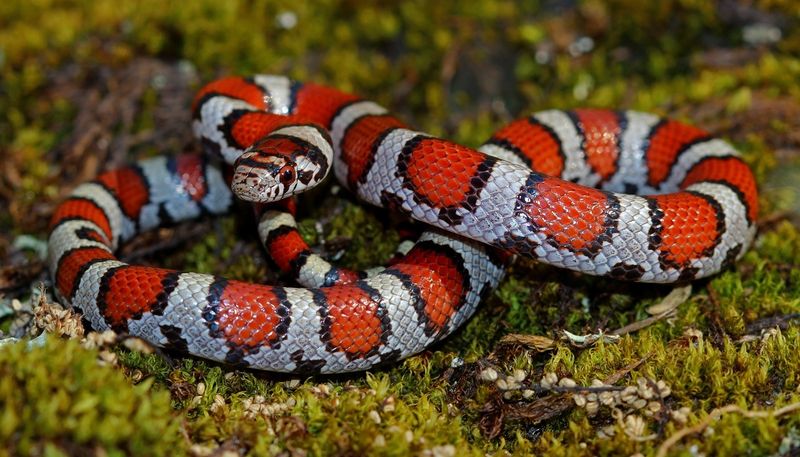
Milk Snakes are known for their striking banded appearance and gentle nature. They can live between 15-20 years in captivity, though their lifespan in the wild is often shorter.
These snakes are found throughout the Americas and are often mistaken for the venomous Coral Snake due to their similar coloration. However, Milk Snakes are non-venomous and pose no threat to humans.
Their ability to adapt to various environments, from forests to grasslands, makes them a resilient species. Milk Snakes’ vibrant colors and calm demeanor make them popular pets among reptile enthusiasts.
Copperhead
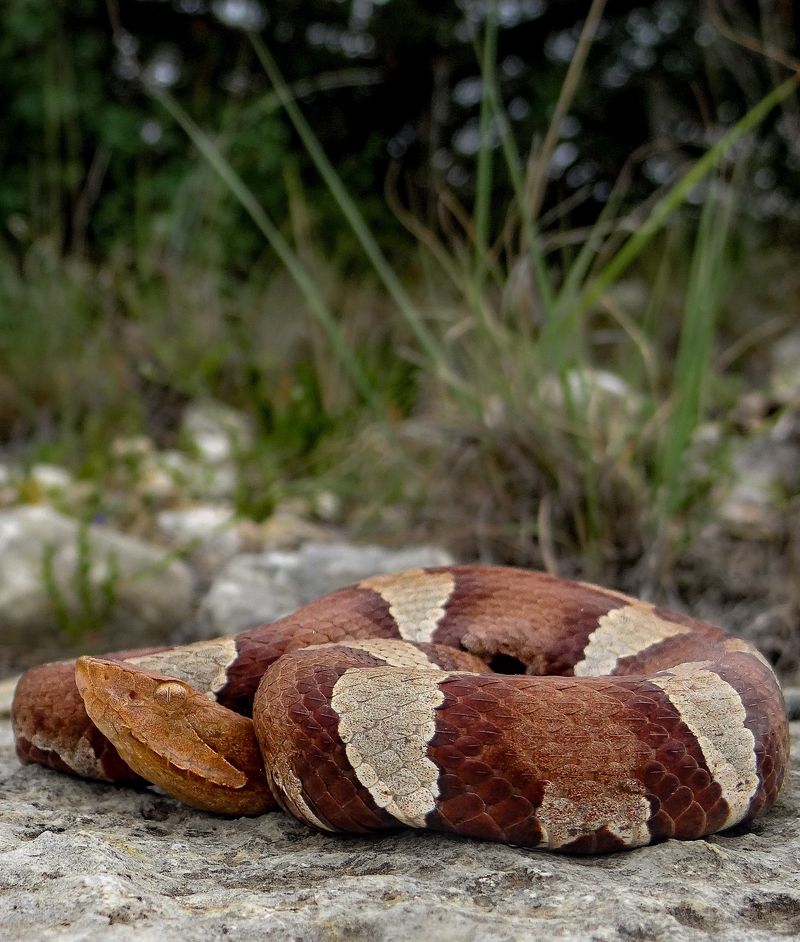
Copperheads are venomous snakes found in the eastern United States, recognized by their coppery heads and hourglass patterns. They typically live for 10-15 years in the wild, with some reaching 20 years in captivity.
These snakes prefer wooded, rocky areas where their camouflage provides effective protection. Copperheads are ambush hunters, relying on stealth to capture prey.
While their bites are rarely fatal to humans, they should still be respected and admired from a distance. The Copperhead’s unique appearance and behavior continue to intrigue herpetologists and nature enthusiasts alike.
Coral Snake

Coral Snakes are small, venomous snakes known for their vibrant red, yellow, and black bands. They can live up to 7 years in the wild and up to 15 years in captivity.
Found in the southern United States and Central America, these snakes are reclusive and rarely seen. Their potent venom serves as a strong defense against predators, although they prefer to avoid confrontation.
The Coral Snake’s striking appearance has made it a subject of fascination and caution. Their presence in folklore and nature serves as a reminder of the delicate balance within ecosystems.
Hognose Snake

Hognose Snakes are known for their unique upturned snouts and dramatic defensive displays. They can live for 10-15 years in the wild, with some reaching up to 20 years in captivity.
These snakes often play dead or flatten their bodies to mimic more dangerous species when threatened. Native to North America, Hognose Snakes inhabit sandy, open areas where they hunt for amphibians and insects.
Their theatrical behavior and harmless nature make them a favorite among hobbyists. The Hognose Snake’s quirky antics and adaptability continue to endear them to snake enthusiasts everywhere.
Bushmaster
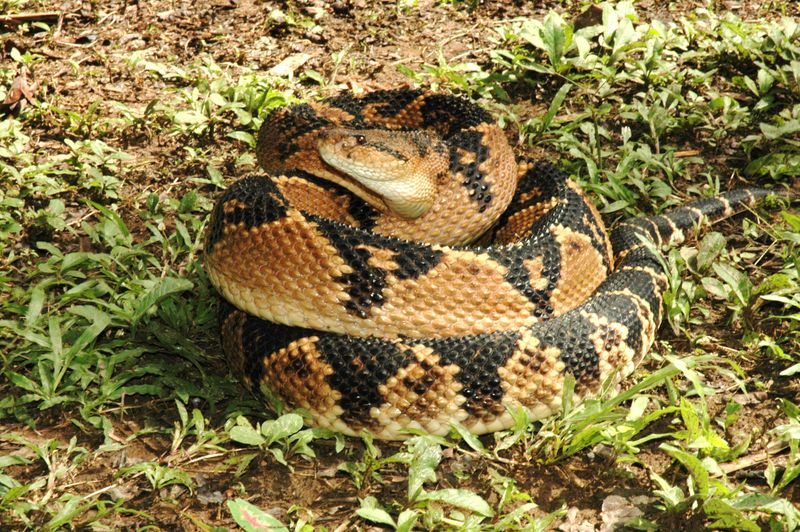
The Bushmaster is the largest venomous snake in the Americas, known for its reclusive nature and potent venom. They can live up to 12 years in the wild, with longer lifespans in captivity.
These snakes are found in the dense rainforests of Central and South America, where they are rarely seen. Their ambush hunting style and natural camouflage make them effective predators.
Despite their dangerous reputation, Bushmasters contribute to their ecosystem by controlling small mammal populations. The mystery surrounding these elusive snakes continues to intrigue herpetologists and wildlife enthusiasts.
Green Tree Python
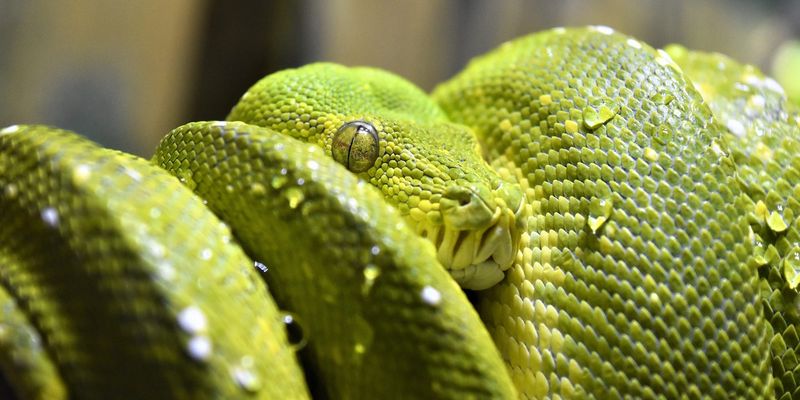
Green Tree Pythons are celebrated for their striking emerald color and arboreal lifestyle. In captivity, they can live up to 20 years, thriving in conditions that mimic their natural habitat.
Native to New Guinea, Indonesia, and Australia, these snakes are masters of camouflage in their leafy environments. Their prehensile tails and slender bodies enable them to navigate branches with ease.
The beauty and grace of Green Tree Pythons make them a favorite among reptile collectors and photographers. Their serene presence in the wild embodies the tranquil complexity of the rainforest ecosystem.

